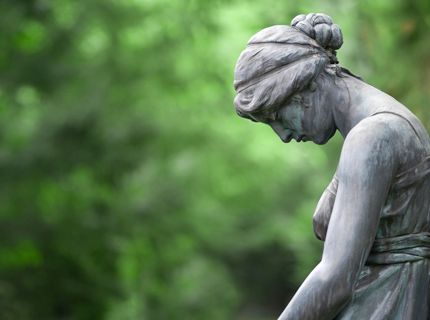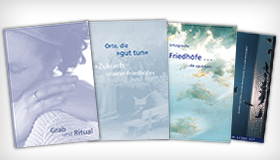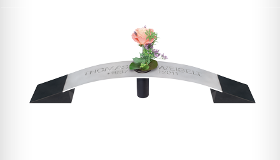Changes in mourning culture
Changes in mourning culture
-
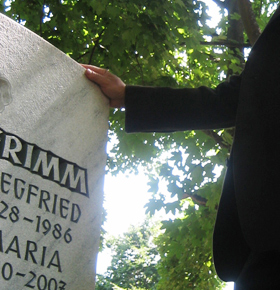
At this time, it is rare to find individually designed memorials in German cemeteries.
Marking a grave is our attempt, as human beings, to preserve the deceased’s identity and keep the memories of them alive. Nevertheless, many memorials today have the same layout and often seem somewhat anonymous. And yet anonymity presents an obstacle if a memorial is meant to keep memories of a special person alive.
Today, typically the only personal information included on a headstone is a person’s name, date of birth and date of death. No words, no images, no symbolism to say anything more about the deceased. Personal touches are often undesirable, or even prohibited.
People grieve in different ways. So why are things different when it comes to memorials? Attempts and approaches are always being made to design memorial sites in new and unique ways. Strassacker encourages an individual mourning and memorial culture, with the courage to create meaningful memorials and a more personalized language of form and symbolism. Mourning culture is evolving and funeral culture must change accordingly.
Yesterday’s cemeteries need to change.
The directives and ordinances that apply to German cemeteries are still based on guidelines issued at the time of the German Reich. These design principles, founded in order and piety, allow for minimal individuality and creativity.
Many mourners today opt for an alternative memorial with no maintenance, because they have no idea who will take the work on in the future. They associate cemeteries with a feeling of obligation and burden. Grave maintenance cost is also a worry. Often they forget that working on a grave, including traditional maintenance, can be a healing and comforting mourning ritual in itself.
Many cemeteries have cash flow problems because they are self-financing. At first glance, alternative memorials seem to be more economic for the bereaved and for the cemetery owner. This leaves cemeteries at a financial disadvantage, which soon becomes obvious.
The fewer people who use cemeteries for burials, the fewer people with whom the costs for cemetery maintenance is divided. As a result, the cost of graves has risen significantly in recent years.
Alternatives to a cemetery:
- Columbaria (urn walls)
- Forest burial grounds/tree burials
- Anonymous interments
- Lawns
- Strewing fields
The problems of cemeteries at a glance:
- Continued exodus of burials from existing cemeteries
- Move toward less expensive funeral variants within cemeteries, such as columbaria
- Rise in free space, rise in maintenance costs and drop in income
- Some cemeteries are at risk of disappearing
What do people expect of a cemetery today?
Alternative types of memorial, such as lawns, communal facilities for urns and tree burials, are currently very popular. But they also come with problems that mourners only notice at a later date. Again and again we see flowers and other reminders placed on alternative memorials. Officially speaking, the alternative memorials mentioned above do not permit this.
A psychological study revealed what the bereaved want from a memorial and/or cemetery:
- Individuality
- Nature, old trees
- Casual, not too cramped, asymmetrical layout of graves
- Cozy rooms to use for private mourning and seating
- Ease of maintenance and no obligation to carry out maintenance
- Quiet zones and cleanliness
- Low (follow-up) costs
-
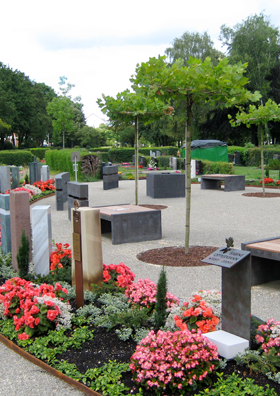
People expect a cemetery to offer quiet, individuality and somewhere to sit.
Strassacker stands for modern and personalized memorial design. This allows the bereaved to grieve in their own way and to say goodbye without taking on huge responsibilities.
The core idea for this solution involves concepts that relieve the bereaved of the burden of maintaining a memorial, while still allowing for mourning rituals.
Cemeteries of the future - places that are good for the soul
In 2009, Strassacker Art Foundry, the German Association of Stone Masons (BIV) and the Association of German Cemetery Operators (BdF) launched the project "Places that are good for the soul". This project aims to positively influence and drive the transformation in mourning culture to benefit all those involved, especially the bereaved. It will highlight new ways of saying goodbye and will design the cemetery of the future.
New cemetery concepts must relieve the bereaved of the burden of traditional maintenance while allowing for mourning rituals at the graveside where desired and required. The project group developed various concepts that have since been implemented by a number of cemeteries and have been well-received by those affected.
As part of this project, the group produced publications and organized an exhibition in Berlin in 2009.
-
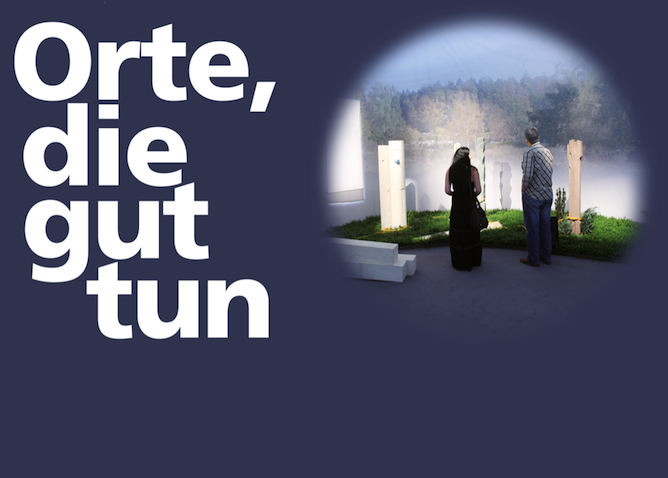
The community project "Places that are good for the soul" has been driving the transformation in mourning culture since 2009.
